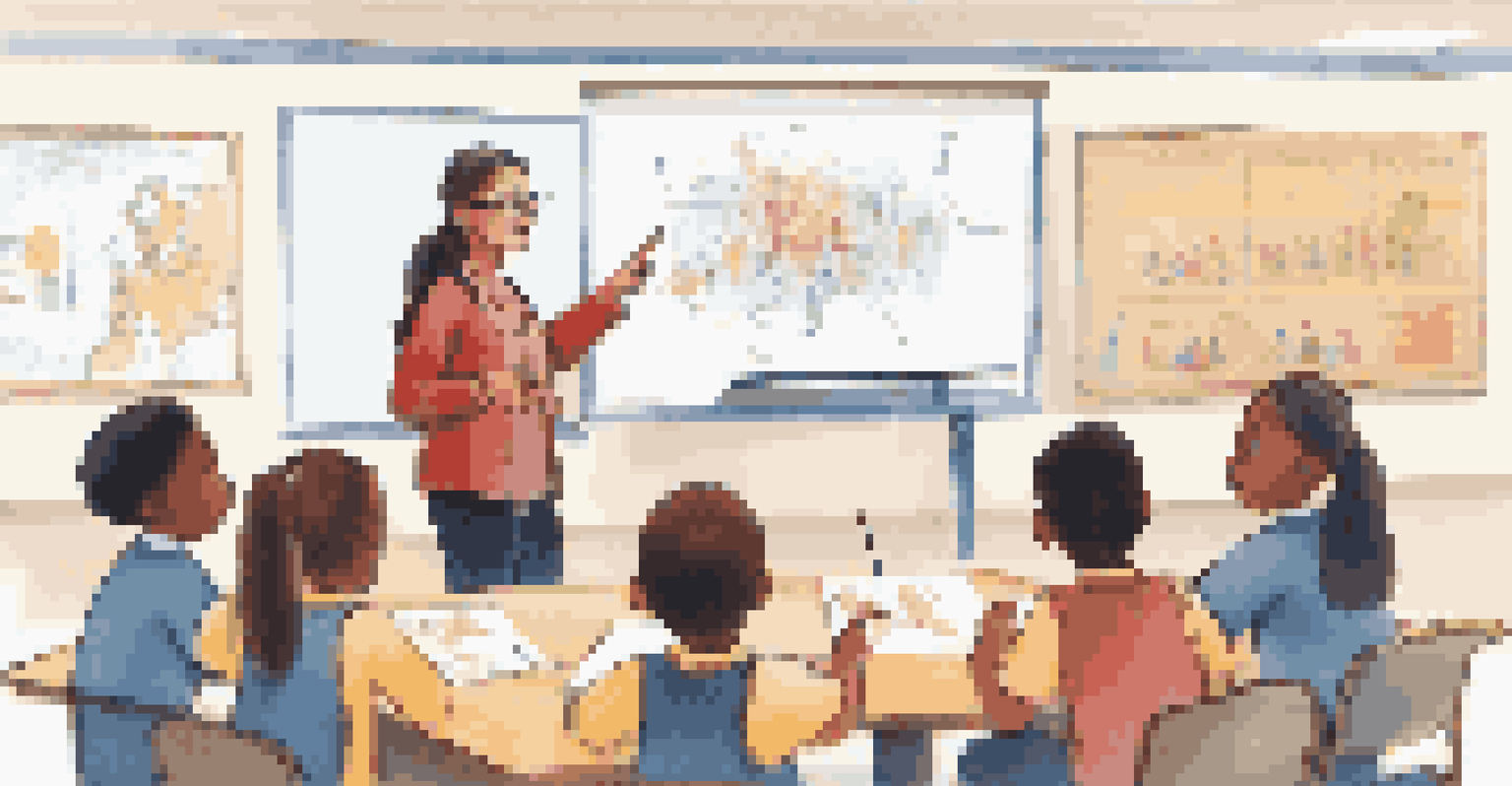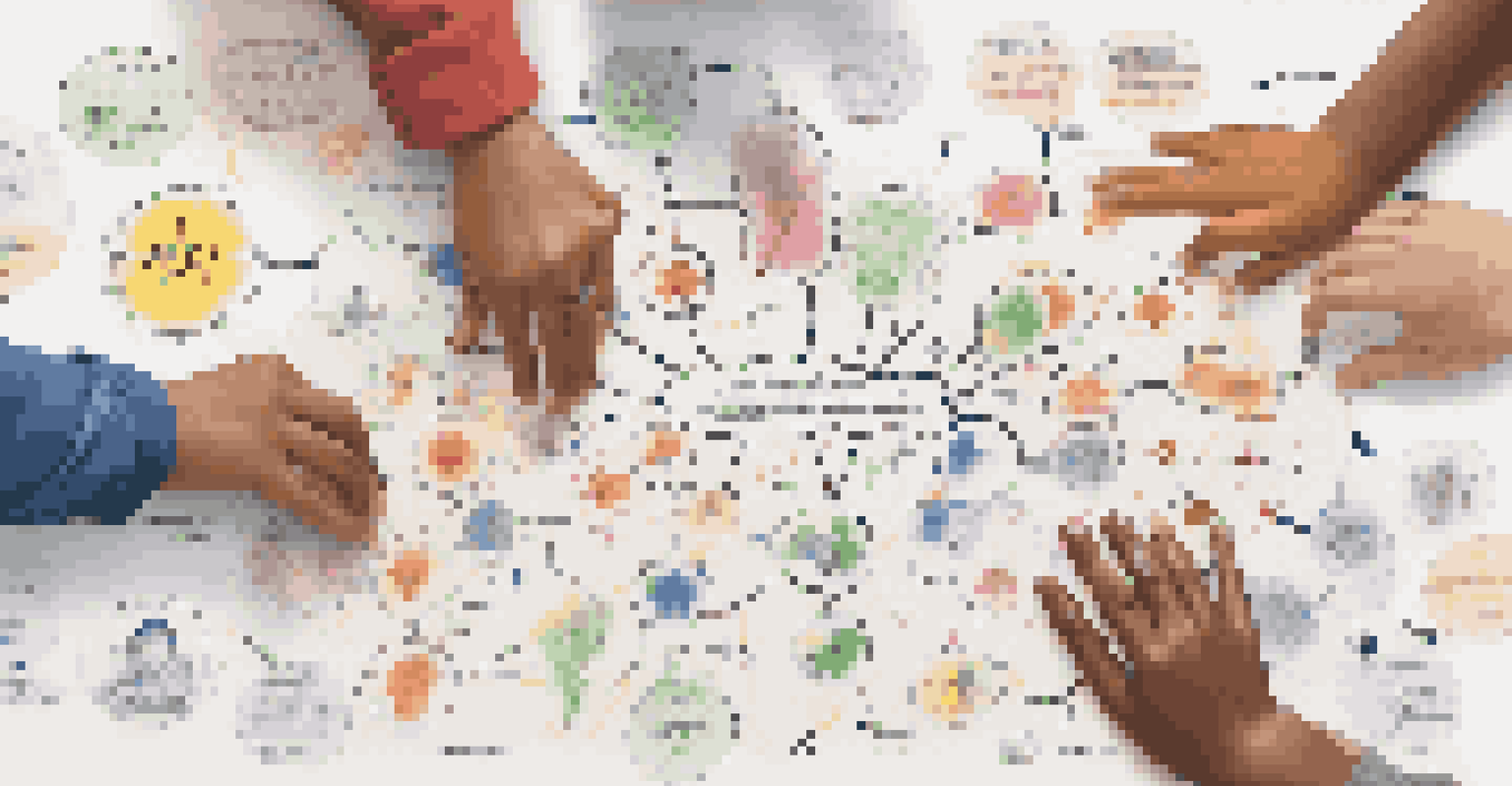Neuroscience of Collaborative Learning: Brain Benefits Revealed

Understanding Collaborative Learning and Its Importance
Collaborative learning is a dynamic process where individuals work together to achieve a common goal. It fosters interaction, communication, and shared responsibility, making learning a social experience. This approach not only enhances understanding but also builds essential skills like teamwork and problem-solving.
Alone we can do so little; together we can do so much.
In today’s fast-paced world, the ability to collaborate effectively is more crucial than ever. Whether in educational settings or the workplace, collaboration encourages diverse perspectives, leading to richer learning experiences. Plus, it mimics real-life situations where teamwork is often necessary.
As we delve into the neuroscience behind this learning method, we’ll uncover how collaboration ignites various brain functions, stimulating critical thinking and creativity. Understanding these brain benefits can help educators and learners alike harness the full power of collaborative learning.
The Brain’s Response to Collaborative Learning
When individuals collaborate, their brains engage in a unique way that enhances cognitive processes. Neuroimaging studies reveal that collaborative tasks activate regions responsible for social cognition, problem-solving, and emotional regulation. This activation can lead to improved memory retention and deeper understanding of complex concepts.

Moreover, when working in groups, the brain releases neurotransmitters like dopamine, which is associated with pleasure and motivation. This chemical boost encourages participants to be more engaged in the learning process. It’s as if the brain rewards you for working together, making learning more enjoyable.
Collaboration Enhances Learning
Collaborative learning fosters interaction and shared responsibility, improving understanding and essential skills like teamwork.
This response emphasizes the significance of social interaction in learning environments. By tapping into our natural inclination for connection, collaborative learning not only enriches knowledge but also fosters a sense of belonging among participants.
Building Emotional Intelligence Through Collaboration
Collaborative learning does more than enhance cognitive skills; it also plays a pivotal role in developing emotional intelligence. As learners work together, they navigate various social dynamics, which helps them understand and manage emotions, both their own and those of others. This skill is invaluable in today’s interconnected world.
The greatest gift of human beings is that we have the power of empathy.
For instance, engaging in group discussions or projects allows individuals to practice empathy, active listening, and conflict resolution. These experiences cultivate a deeper awareness of social cues and emotional responses, leading to healthier interpersonal relationships. Emotional intelligence, in turn, contributes to effective communication and teamwork.
The link between collaboration and emotional growth highlights the holistic benefits of this learning approach. As learners become more emotionally intelligent, they’re better equipped to handle challenges, not just academically but in all aspects of life.
Enhancing Critical Thinking Skills with Teamwork
One of the standout benefits of collaborative learning is its ability to enhance critical thinking skills. When learners come together, they are exposed to different viewpoints and problem-solving strategies. This diversity of thought encourages individuals to analyze information more deeply and consider alternative solutions.
For example, during a group project, students must evaluate each other’s ideas, defend their perspectives, and challenge assumptions. This process sharpens analytical skills and promotes a culture of inquiry. The more individuals engage in such discussions, the more adept they become at critical thinking.
Boosting Emotional Intelligence
Working together helps learners navigate social dynamics, enhancing their emotional intelligence and communication skills.
In essence, collaborative learning transforms passive information reception into an active, dynamic exploration of ideas. This not only prepares learners for academic success but also equips them with essential skills for future professional environments.
The Role of Neuroplasticity in Collaborative Learning
Neuroplasticity refers to the brain's ability to reorganize and form new connections throughout life. Collaborative learning leverages this remarkable capability, as regular interaction and teamwork stimulate brain growth and adaptability. Engaging with peers encourages the formation of new neural pathways, enhancing cognitive function.
Studies suggest that when learners participate in collaborative tasks, they experience increased brain activation in areas related to learning and memory. This heightened activity not only boosts retention but also fosters a more profound understanding of the material being studied. The brain becomes more flexible and responsive to new information.
Understanding neuroplasticity in the context of collaboration highlights the long-term benefits of working together. As learners engage in collective efforts, they are not just absorbing knowledge; they are actively rewiring their brains for improved learning outcomes.
Social Connections: The Foundation of Collaborative Learning
At the heart of collaborative learning lies the concept of social connections. Humans are inherently social beings, and our brains are wired to forge relationships and communicate effectively. Collaborative learning environments capitalize on this instinct, creating a space where individuals feel safe to share ideas and opinions.
These social interactions can significantly enhance engagement and motivation. When learners feel connected to their peers, they’re more likely to participate actively and invest in the learning process. This sense of community not only fosters a positive atmosphere but also encourages accountability among group members.
Critical Thinking Through Teamwork
Engaging in group discussions exposes learners to diverse viewpoints, sharpening their critical thinking and problem-solving abilities.
As we explore the neuroscience of collaboration, it becomes clear that these social bonds play a crucial role in enhancing learning outcomes. The stronger the connections, the more effective the collaborative experience becomes, paving the way for successful learning journeys.
Practical Applications of Collaborative Learning in Education
Incorporating collaborative learning strategies into educational settings can significantly boost student engagement and achievement. Techniques such as group projects, peer teaching, and study circles not only promote teamwork but also allow learners to take ownership of their education. This active participation can lead to a deeper understanding of the subject matter.
Teachers can facilitate collaborative learning by creating structured environments that encourage communication and cooperation. For instance, assigning roles within groups can help ensure that every member contributes, fostering a sense of responsibility and teamwork. These practical applications can transform the classroom experience.

Ultimately, by embracing collaborative learning, educators can harness the brain benefits we’ve discussed. The result is a more dynamic and enriching learning environment that not only enhances academic performance but also prepares students for success in their future endeavors.